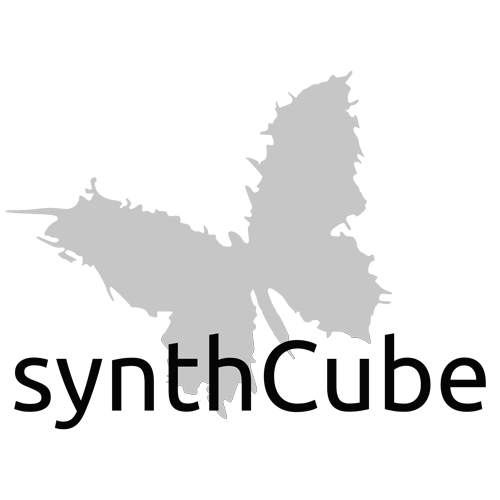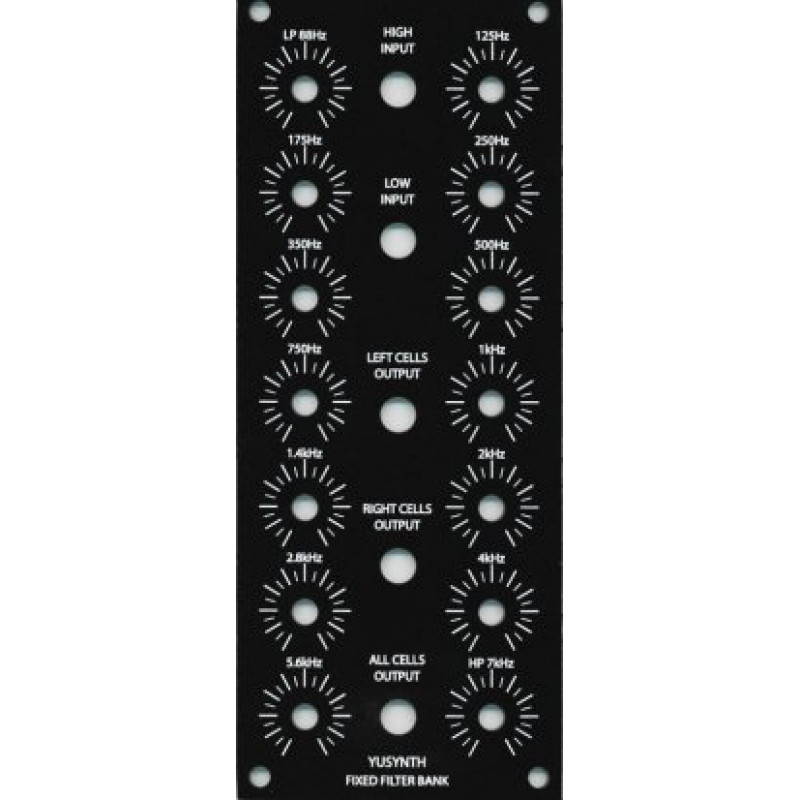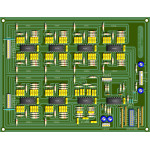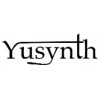Yusynth Fixed Filter Bank
Yusynth Fixed Filter Bank
Documentation here: yuSynth FFB
MOTM panel 2U
From Yves:
"Although this module is often missing in many modular set-ups, I think a fixed filters bank (FFB) is a really useful module and personally I could not imagine a decent set-up without one. The reference FFB is the 914 module from Moog
The FFB makes it possible to greatly enrich the sonic palette of a modular system. It is also a key element for the recreation of "natural" and environmental sounds, or of conventional music instruments. Although it evokes the principle of a mere graphic equalizer, it has marked differences. Mainly, the filter Q is higher and the BP slopes are steeper than in a graphic EQ. Furthermore when a control is set to zero, the corresponding spectral band is completely muted.
Complex/entangled rhythms can be created on the fly by multi-band filtering a simple sequence.
I designed this module with the Moog 914 filter bank in mind. Therefore I tried to obtain similar characteristics for the band-pass, low-pass and high-pass filter as in the Moog 914. The original Moog's design uses passive cells based on inductors and capacitors. Nowadays, finding this type of inductors is very difficult and it would cost a lot of money to have them specially wound. This is why I chose to replace these passive components by active components. In order to design band-pass cells using active components (i.e. OP amps) with the same characteristics as in the Moog 914, there are two possible approaches :
- the first one is to simulate the inductors using gyrators or N.I.C.s (negative impedance converter). This is a very efficient solution but is very expensive because it requires at least four OP amps to recreate a single band-pass cell with the same Q and -12dB/octave attenuation slopes.
- the second one is to replace the passive cell with an active filter. There, the choice of architecture is wide. However, considering the constraints (low number of OPAs to reduce costs, ease of calculation of component values, low sensitivity to tolerance of the components...) the best choice appeared to be the Deliyannis band-pass cell also known as Rauch multiple feedback filter.
The other advantage of using active filters is that the output level of this filter is much higher than that of Moog's.
This module has twelve fixed band-pass filters with -12dB/octave slopes, a low-pass filter and a high-pass filter with -24db/octave slopes. All the filters are resonant with a Q coefficient around 3.7. The gain of each filter is adjustable from completely silent to maximum.
Two inputs (with different gain levels) are provided as well as three outputs : a main output with all filter cells mixed, an ouput with only odd cells and the third output with only even cells. These separate outputs make it possible to use the FFB for creating pseudo-stereo sounds (spacialization).
This module uses not less than 32 OPAs (8 ICs), 125 capacitors, 95 resistors and 14 potentiometers !
The current draw of the module is 70mA both on the positive and negative power lines.
These kits and assembled modules are offered on demand, click the link to learn more.
| Module Parameters | |
| Format | MOTM |




